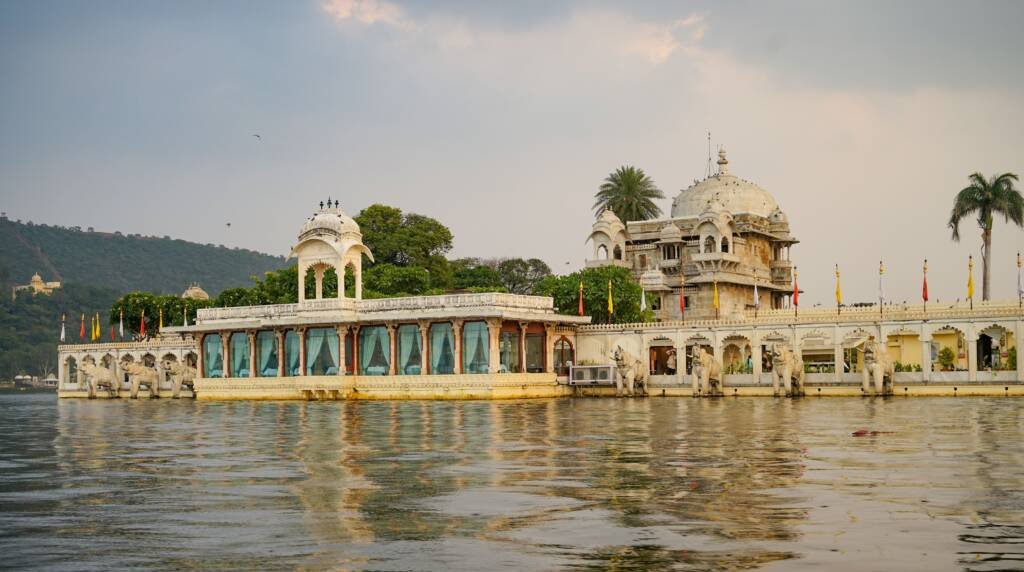Where Stone Breathes and Wood Whispers
There’s a hush that falls when one steps into the courtyards of India’s ancient palaces—not of silence, but of memory. The stones beneath our feet have known barefoot queens and sandalwood-scented nights. The teak doors creak with stories, and the breeze through the jharokhas still carries whispers of wisdom. These royal abodes were more than monuments of opulence; they were symphonies of sustainability, in rhythm with nature, climate, and culture.
India’s palaces were not just designed for grandeur, but for graceful coexistence with the elements. Every wall, every window, every waterbody was steeped in mindful design. Sustainability wasn’t a buzzword then—it was a way of being.
Architecture That Danced with Nature
Whether it was the sandstone forts of Rajasthan or the granite palaces of the Deccan, indigenous materials ruled the craft. Stones were quarried locally, lime plaster cooled interiors, and walls were thick enough to embrace warmth in winter and repel heat in summer. The palaces didn’t fight the climate—they folded into it like a raga that bends and flows with its mood.
Courtyards were not just aesthetic indulgences—they allowed cross-ventilation, filtered sunlight, and served as sacred spaces of congregation. The placement of rooms followed the vastu purusha mandala, a cosmic blueprint that ensured the palace pulsed in tune with the energies of earth, water, fire, air, and space.
Roof gardens in some palaces—like those of Udaipur—worked as natural insulators. The use of water bodies—tanks, stepwells, and fountains—didn’t just cool the air, but created microclimates of serenity. Every decision, every detail, was rooted in prakriti—the primal balance of life.


Living Lightly, Living Luxuriously
Sustainability in royal lifestyles was a quiet discipline cloaked in elegance. Palaces practiced a refined minimalism that was mindful, not modest. Textiles were handwoven, often using organic cottons and silks dyed with natural hues. Furnishings were crafted by local artisans using renewable materials—bamboo, cane, and wood—seasoned and shaped by generations of knowledge.
Waste was minimal. Food was grown in palace gardens, cooked with seasonal, locally sourced ingredients. Even perfumes were sustainable—made from attars and florals, not synthetics. Recycling was second nature: old saris became canopies, broken bangles adorned murals, and excess grain was offered in temple rituals.
Water conservation was intrinsic. Rainwater harvesting systems—kunds, baoris, talabs—fed the palaces and their people. Greywater was used for gardens. A reverence for resources flowed through the royal ethic.
Traditions Rooted in Reverence
Palace life was deeply intertwined with rituals that reinforced respect for nature. Daily pujas began with offering water to the sun, deepdans lit up thresholds not just to illuminate, but to ward off insects naturally. Festivals aligned with the agricultural calendar, reminding all that luxury must bow before the rhythms of land and season.
Artisans and workers who built and sustained these palaces were considered custodians, not labour. Their traditions were nurtured, their skills passed down, ensuring cultural continuity and economic resilience. Sustainability in palace life was as much about community as it was about conservation.
A Legacy Worth Listening To
In an age where we seek answers in steel and glass, the palaces of India hum softly with ancient wisdom. They teach us that sustainability is not sacrifice—it is sacredness. It is the joy of living in alignment with nature, the humility of knowing we belong to the earth, not the other way around.
These royal structures, though adorned in gold and marble, were fundamentally rooted in simplicity, self-sufficiency, and sanctity. They invite us to reimagine our present—where luxury need not mean excess, and tradition can lead innovation.
A Soulful Return
As we stand at the crossroads of climate anxiety and cultural amnesia, let us turn to these timeless palaces—not just as tourists, but as seekers. May we walk their corridors not just in awe, but in reflection. May we remember that the grandeur of our past lies not only in what was built, but in how it was lived—lightly, mindfully, beautifully.
And in doing so, may we rediscover the lost art of living well—with the earth, within ourselves, and in reverence to the heritage that still calls out through carved stone and whispering winds.



